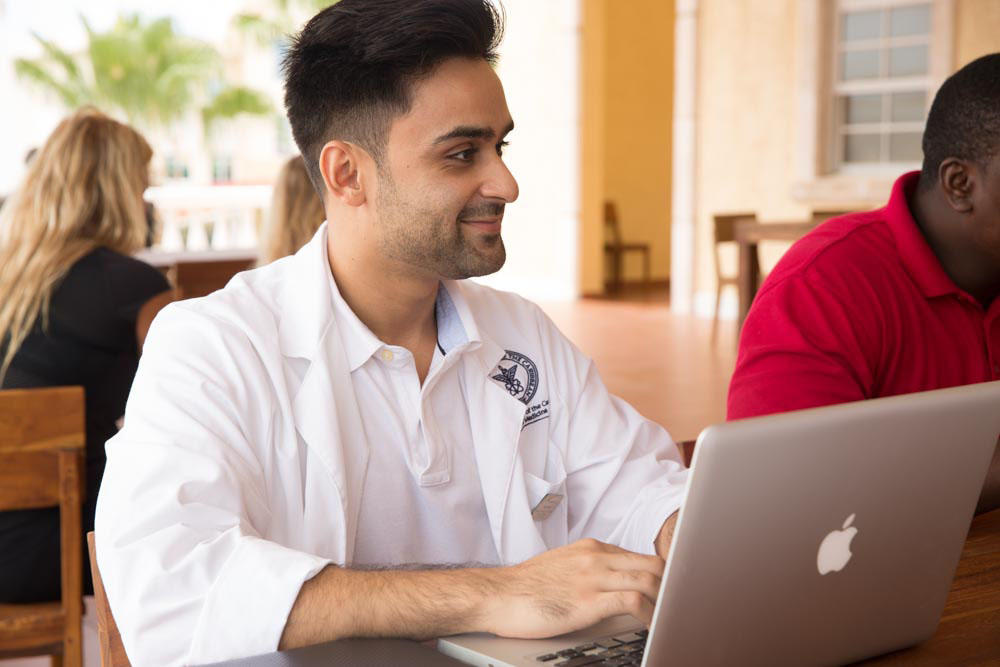In 2014 the Accreditation Council for Graduate Medical Education (ACGME) and the American Osteopathic Association (AOA) announced an agreement to phase out the AOA accreditation bodies and require all US residency programs to be accredited by the ACGME by 2020. Since then, aspiring doctors have questioned whether this accreditation merger, known as the Single Accreditation System (SAS), would impact their ability to secure a residency position.
Students from international medical schools like American University of the Caribbean School of Medicine (AUC) have worried that the merger would benefit osteopathic school graduates at their expense. But a closer look at the SAS suggests that our graduates’ competitiveness in the Match still largely rests with them and their own performance during medical school, and that students from schools like AUC may actually benefit from the new system.
To understand why, let me first break down what is occurring.
Overview of the Single Accreditation System
Starting in 2015, residency programs that were accredited by AOA could begin the process of converting to ACGME accreditation. Today, DO graduates have the option of entering the National Resident Matching Program (NRMP) and attempt to gain a position in an ACGME-accredited program, in competition with graduates from US and international allopathic schools (MD graduates). Or they could enter the AOA match, which only includes graduates of DO schools. Referred to as the DO “safety net,” the AOA match all but ensured that qualified DO graduates would find a residency.
However, many of the 3,109 AOA positions offered in the 2017 AOA match will likely be converted to ACGME positions through the pathways to ACGME accreditation laid out in the SAS. This is good news for international medical graduates (IMGs) from schools like AUC because it means an infusion of residency positions for which they can apply. DO graduates will be able to apply for them too, but they won’t have the AOA match to fall back on.
Impact on Competition for Residency
Competition for residency positions will remain fierce, but I am confident that AUC graduates are well positioned to succeed under the new accreditation system, and that the challenge posed by additional DO graduates in the NRMP may be overblown. Under the current system, AUC graduates (in aggregate) are already outperforming DO graduates in the match.
Let’s look at the numbers:
The NRMP reported a match rate of 80.3 percent[1] for DO graduates in 2016, but this number doesn’t tell the whole story. Dr. Norman Gevitz, the head of Academic Affairs department at A.T. Still University, a highly respected osteopathic medical school, paints a much bleaker picture for DO graduates.[2] He notes that of the 4,278 DO graduates who entered the NRMP match last year, 1,108 withdrew before the Match—a quarter of the original group. He surmises that many likely withdrew because they (or their academic advisor) did not feel confident that they would attain a residency position. Some AUC graduates also withdraw from the Match or opt not submit a rank order list required to participate, albeit at a lower percentage.
So yes, of the 2,982 DO graduates who stayed in the NRMP Match in 2016, 80.3 percent found a position through the initial match. An additional number found positions through the Supplemental Offer and Acceptance Program (SOAP), bringing the total to 2,528 and overall rate to 84.8 percent. But consider the full picture: only 59.1 percent of all DO graduates secured a position in an ACGME program, while 25.9 percent withdrew from the NRMP and cast their lot with the AOA match, the safety net that will disappear over the next three years.
By comparison AUC graduates performed at a higher rate. In 2016, AUC had 323 graduates, 286 of whom entered the Match. Of those who remained in the Match, 247 (86 percent) secured a position by July 1, 2016, but even if one includes the whole graduating class, as we do above with DO, AUC’s percentage is far better, with 76 percent of graduates securing an ACGME-accredited residency on the first attempt.[3]
Taking the Accreditation Merger into Consideration when Selecting a Medical School
Aspiring medical students, their families, and pre-med advisors need to understand that students entering DO programs over the next several years have a more challenging path to navigate than in the last five years, especially if they elect to enroll in a relatively new (less than 5-10 years old) osteopathic medical school. These students will not enjoy the residency training safety net.
In the 2017 AOA match, which occurred in January, 3,109 first-year DO residency positions were offered and 2,214 were filled. This leaves a safety net of 895 positions for those DO graduates who are unsuccessful in the ACGME residency match occurring in March. By the time students enrolling in a DO school this year are ready to graduate, that safety net will be gone, and all DO graduates will have to compete in the NRMP.
And there is one more factor to consider. Currently DO students can elect to not take the United States Medical Licensing Examination (USMLE), since AOA-accredited residency programs accept the COMLEX exam. I anticipate that programs that convert to ACGME accreditation may discontinue accepting the COMLEX and require all applicants to take the USMLE. Until we know for certain, I would advise all students considering medical school to plan to take the USMLE examinations and to select a medical school that will adequately prepare them to perform well on the USMLE examinations.
The SAS is an important and positive change. The purpose of this unification, driven by ACGME, is to ensure that the evaluation of and accountability for the competency of all residency physicians is consistent across residency programs. In addition, it improves the fairness of the residency attainment process by allowing all qualified graduates of medical schools to compete for all residency positions. I am looking forward to 2020.
[1] Source: “Results and Data: 2016 Main Residency Match®”
[2] Source: Norman Gevitz, “The Process and Consequences of the ACGME Merger,” September 16, 2016
[3] Source: AUC residency attainment data provided to Accreditation Commission on Colleges of Medicine




